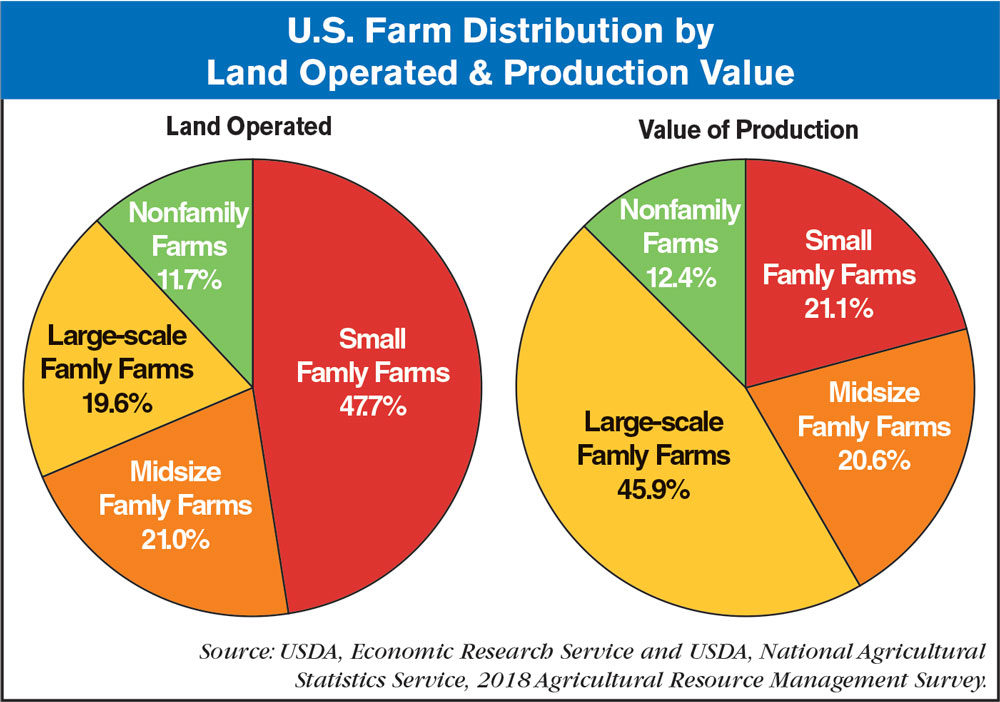Approximately 90% of U.S. farms are small. In 2018, small farms accounted for 48% of the land operated by farms and 21% of production. Large scale family farms accounted for the largest share of production at 46%.
Family farms as a group, across type, accounted for 98% of farms and 88% of production in 2018. Nonfamily farms accounted for the remaining farms (2%) and production (12%). Some 15% of nonfamily farms had GCFI (gross cash farm income) of $1 million or more. Such farms accounted for 87% of nonfamily farms’ production. Examples of nonfamily farms include partnerships of unrelated partners, closely held nonfamily corporations, farms with a hired producer unrelated to the owners, and (relatively few) publicly held corporations.
What is a farm?
USDA defines a farm as any place that, during a given year, produced and sold — or normally would have produced and sold — at least $1,000 of agricultural products. USDA uses acres of crops and head of livestock to determine whether a place with sales of less than $1,000 could normally produce and sell that amount. Farm size is measured by GCFI, a measure of the farm’s revenue that includes sales of crops and livestock, government payments and other farm-related income, including fees from production contracts.





Post a comment
Report Abusive Comment